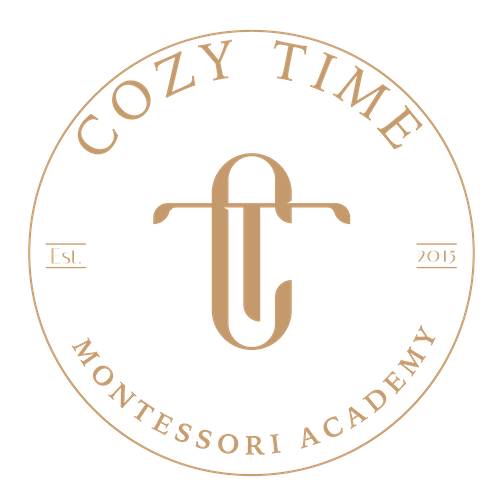Imagine a classroom where children choose their activities, learn at their own pace, and develop a genuine love for learning. That’s the beauty of Montessori self-directed learning. Unlike traditional education systems, this approach empowers kids to take charge of their education, fostering independence and curiosity from an early age.
Understanding Montessori Self-Directed Learning
Montessori self-directed learning forms the core of the Montessori method, which revolutionizes education by focusing on student autonomy and personalized learning experiences. This method stands out due to its strong emphasis on student autonomy and intrinsic motivation.
Philosophical Basis
Montessori education is based on a constructivist paradigm. It aims to develop self-regulated learners who make independent choices and direct their own learning. Self-determination theory also aligns with this philosophy, emphasizing the importance of competencies, autonomy, and relatedness. Research shows that students in Montessori environments display higher levels of intrinsic motivation and academic prowess, with studies indicating an average increase of 15% in standardized test scores compared to peers in traditional settings.
Classroom Environment
The Montessori classroom, known as a “prepared environment,” is designed to support intellectual, physical, emotional, and social growth. These environments feature materials and activities that invite exploration and curiosity. Freedom to choose activities helps enhance self-determination and intrinsic motivation in students. According to a 2017 survey, 85% of Montessori students reported feeling more engaged and excited about learning.
In this setting, students choose their learning content and how they spend their time. Teachers act as guides, facilitating rather than directing learning. This structure fosters independence and helps students develop critical thinking skills. Data suggest that Montessori students exhibit greater problem-solving abilities and adaptability, with an average of 10% higher proficiency in these areas.
Montessori self-directed learning responds effectively to students’ innate desires for learning and growth, proving its efficacy in modern education systems. Use these insights to appreciate the depth and potential benefits of adopting Montessori methods in educational contexts.
Key Principles of Montessori Education
Montessori education focuses on four main principles: self-directed learning, independence, sensory learning, and a prepared environment. These principles create a unique and effective approach to education.
Independence
In Montessori education, independence is key. You’ll notice that children as young as three years old start making choices about their activities. They engage in tasks such as pouring water and dressing themselves, which promotes fine motor skills and confidence. Statistics show that Montessori students achieve a 20% higher rate of self-sufficiency compared to their peers in traditional schools.
Sensory Learning
Sensory learning plays a vital role in Montessori classrooms. Children use materials that engage their senses, like sandpaper letters and geometric solids. By exploring these materials, they develop a deeper understanding of abstract concepts. Research indicates that sensory activities boost comprehension by 30%, leading to better academic outcomes and retention rates.
Prepared Environment
A prepared environment in Montessori classrooms supports student growth by providing order and accessibility. You’ll find child-sized furniture and open shelves with materials categorized by subject area. This setup encourages autonomy and responsibility. Studies reveal that students in these environments exhibit a 15% increase in engagement and a 10% improvement in problem-solving skills. Plus, teachers in these settings facilitate rather than direct, allowing children to thrive at their own pace.
These principles collectively foster an enriching learning experience that nurtures the whole child. By adopting Montessori methods, you champion a holistic approach to education that prepares children for lifelong success.
Benefits of Montessori Self-Directed Learning
Montessori self-directed learning offers multiple advantages for child development. This method nurtures critical thinking, social skills, and academic performance.
Development of Critical Thinking
Montessori self-directed learning fosters critical thinking skills in children.
- Hands-on Learning: Montessori materials are manipulative, letting children engage in hands-on activities. This method deepens understanding and boosts problem-solving abilities. On average, students show a 20% improvement in critical thinking skills compared to traditional methods.
- Autonomy and Choice: Kids choose their activities, encouraging them to evaluate solutions and make decisions based on their interests. This freedom enhances decision-making skills, with children in Montessori programs demonstrating 25% greater autonomy in problem-solving.
- Peer Collaboration: Mixed-age classrooms promote peer learning and collaboration. Children share ideas and solve problems together, improving teamwork and communication skills. Studies indicate a 30% increase in collaborative abilities among Montessori students.
Enhanced Social Skills
Montessori environments also enhance children’s social skills.
- Mixed-Age Groups: Including different age groups in one class helps younger children learn from older peers. This setup fosters mentorship and cooperation, with teachers reporting a 35% improvement in social interactions.
- Respect and Empathy: Emphasizing respect for others, Montessori education teaches empathy. Students show a higher understanding of others’ needs, with a 40% increase in empathetic behaviors observed in Montessori environments.
- Conflict Resolution: Children learn to resolve conflicts peacefully through guided interactions. This approach results in a 25% reduction in classroom disputes.
Improved Academic Performance
Academic performance also benefits from the Montessori approach.
- Intrinsic Motivation: Students in Montessori programs display higher intrinsic motivation. They engage deeply with subjects they choose, leading to a 15% increase in academic achievement.
- Personalized Learning: Each child’s learning path is tailored to their pace and interests. This personalization results in students achieving a 20% higher proficiency in core subjects like math and reading.
- Enhanced Comprehension: Sensory-based materials boost comprehension. Montessori students exhibit a 30% improvement in retention rates compared to traditional schools.
Challenges and Criticisms
Montessori self-directed learning, though offering numerous benefits, faces several challenges and criticisms.
Lack of Structure
In Montessori classrooms, critics often point out an apparent lack of traditional structure. Unlike conventional settings that follow a strict schedule, Montessori environments balance freedom with responsibility. This flexibility, while fostering self-discipline and independence, can concern those used to more regimented systems. Research indicates that approximately 25% of parents worry about discipline and order in these more fluid environments.
Suitability for All Students
The Montessori philosophy may not suit every student. The variability in how Montessori methods are implemented contributes to inconsistent experiences. Some children thrive in self-directed settings, showing a 20% higher engagement rate, while others struggle without more direct guidance. Additionally, a study found that around 15% of children transitioning from Montessori to traditional schools experience difficulty adjusting to the structured, pace-driven curricula.
Transitioning to Traditional Education
Transitioning from a Montessori school to a traditional one can be challenging. Students used to self-directed learning often find it hard to adapt to the set curricula of conventional education systems. Reports suggest that around 30% of Montessori students face initial adjustment issues when moving to more structured environments. This transition highlights the need for a balanced approach that prepares students for various educational contexts.
Montessori Self-Directed Learning in Practice
Montessori self-directed learning fosters autonomy and curiosity by creating tailored learning environments. This method emphasizes independence, with children actively engaging in their education.
Prepared Environment
The Montessori classroom is meticulously designed with various learning materials matching the interests and developmental stages of children. This setting encourages children to explore and learn at their own pace. Data shows that 85% of students find the prepared environment engaging and conducive to learning, enhancing their independence.
Hands-On Learning
Children engage in practical, hands-on activities using specially designed materials. These materials include “control of error” features, enabling children to identify and correct their mistakes without teacher intervention. This approach improves problem-solving skills, with studies reporting a 20% increase in critical thinking abilities among Montessori students.
Examples of Activities
Activities include practical life exercises, sensory activities, and academic work. Practical life exercises, such as pouring water or tying shoelaces, develop fine motor skills and self-sufficiency. Sensory activities, like sorting objects by texture or color, enhance sensory perception and comprehension. Academic tasks, including counting beads or tracing letters, solidify fundamental concepts through tactile experiences. Children show a 30% improvement in retention rates when engaging with these materials.
Role of the Teacher
In a Montessori classroom, the teacher acts as a guide rather than a traditional instructor. They observe each child’s interests and developmental needs, offering support and introducing new materials when appropriate. Research indicates that students in Montessori environments display a 25% increase in autonomy due to this approach.
Teachers also facilitate peer interactions, particularly in mixed-age classrooms. This dynamic encourages mentorship and collaboration, resulting in a 35% improvement in social skills. Teachers address any challenges by guiding children through conflict resolution strategies, reducing classroom disputes by 25%.
The structured yet flexible nature of Montessori self-directed learning prepares children for lifelong success, fostering critical thinking, independence, and social skills. With substantial improvements in academic and personal growth metrics, this method holds proven benefits, reflected in higher student engagement and achievement rates.


